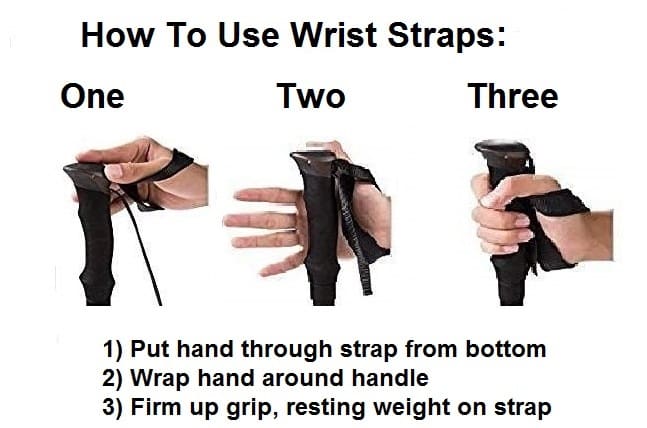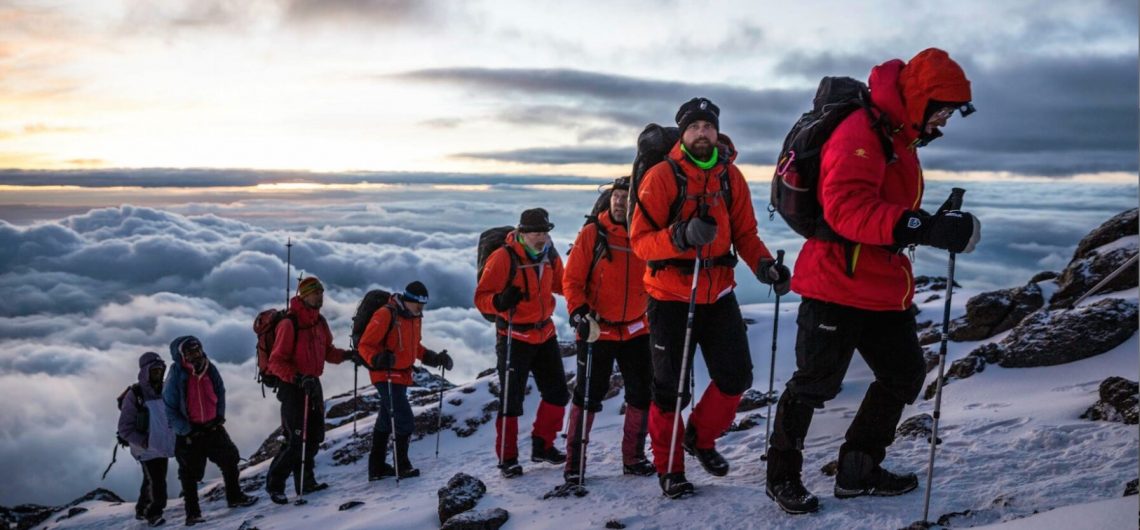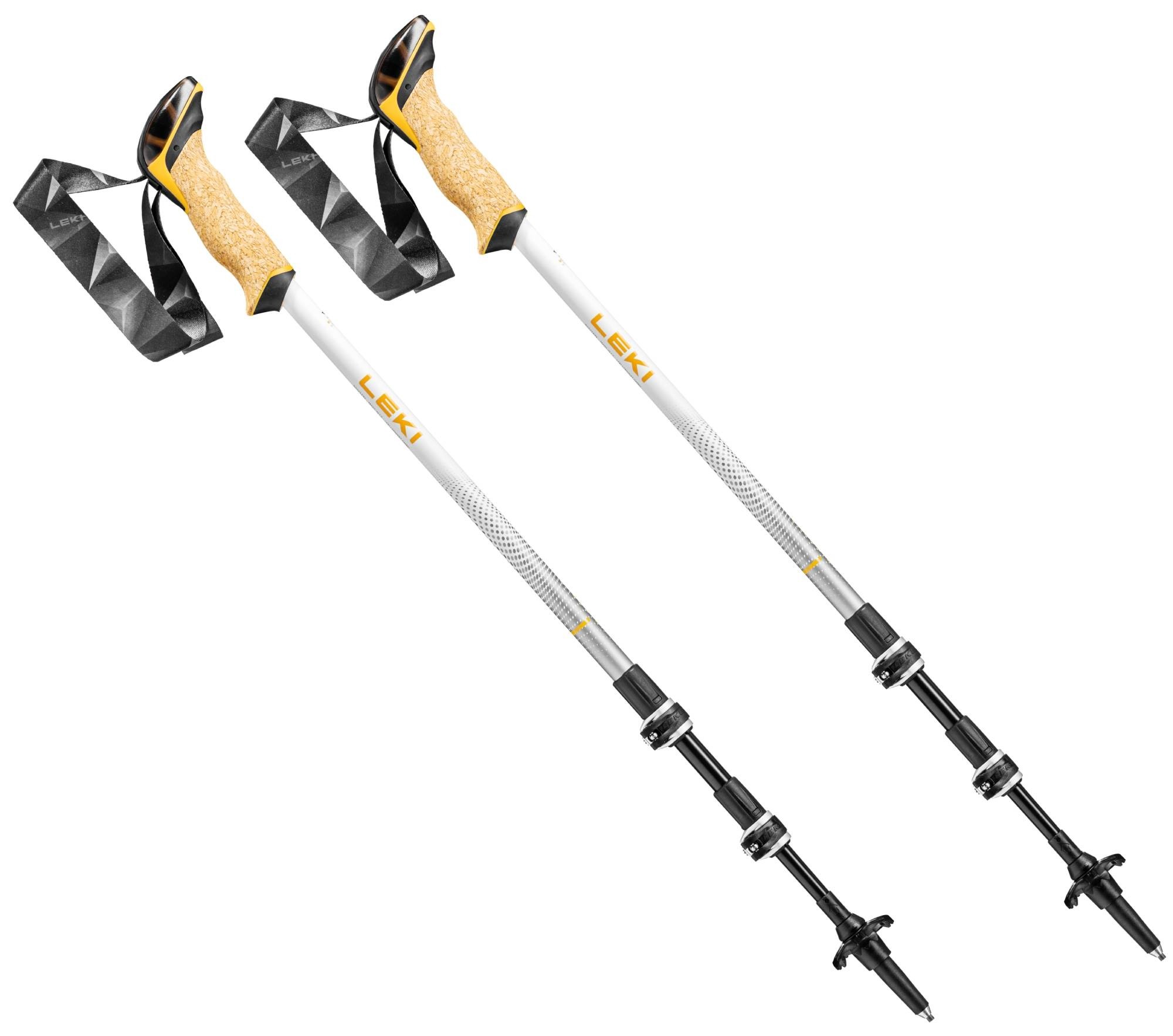Today we’re going to talk about the proper way to use trekking poles while climbing Mount Kilimanjaro. Poles help study you on uneven and wet ground and help lighten the load on your knees as you descend from the summit. We highly recommend renting trekking poles in Tanzania which is much easier to pick them up at the trip briefing versus trying to pack them and bringing them on the airplane. Keep in mind you’ll pay for any rental equipment with cash, US Dollars before you begin your mountain climbing expedition.
The proper way to set up your trekking pole is first to extend them to the correct height. For example, a six-foot-tall person can extend them to 130 centimeters on top and 125 centimeters on the bottom. This ends up being about 50 inches. Your arms should be about 90-degree angle. Once you have them extended, you don’t want to hold them correctly to lessen fatigue on your arms. The way to do this is to come up from the bottom of the loop and grasp the grips.
Dos and Donts when using trekking poles on Kilimanjaro
Finally, remember that when using trekking poles there are people behind you. Make sure not to swing the poles too far as you walk.
Nowadays, trekking poles are a lot more popular. And I think people are starting to understand the benefits of using poles. And those benefits are only available to those who understand the technique and can master it. Below are some of the benefits of using trekking poles while climbing and descending Mount Kilimanjaro.
To learn more about trekking poles, click here.
Stability and support
Two more points of touch with the trail are provided by trekking poles. You may walk with better balance thanks to this. Despite the exceedingly well-maintained paths on Kilimanjaro, there are certain areas that need navigating through mud, boulders, and scree (loose gravel). Trekking poles provide you with more stability over slick, uneven ground.
Obviously, having a pair of walking poles in your hands is like having an extra pair of feet. So if you’re on uneven ground, you’re going to have rocky areas, you just genuinely need that little bit of stability and support. Using a set of walking poles will give you some support and some extra stability. Should you need it. walking poles will reduce the stress through your body. So if you think about how many steps you take, on an average trek, each step you take by using poles will reduce the impact load through your feet through your knees to your hips, and into your back. And also, by using the poles in the correct way, your posture will be improved, your shoulders a bit more relaxed, your chest to be open, you’d be more upright, therefore there’ll be less stress through the back, particularly when carrying heavier loads. If you’ve got a big rucksack on, or even a little daypack on your back, you generally tend to stoop a little bit just to get that weight balanced. But by using trekking poles, it makes you stand more upright, and you attain a better posture. So there’s less stress through your back and through your hips around the end of your walk, you just feel a little bit more refreshed and less achy, and your feet a little less sore. And you’re just not giving your body quite as much as a hammering you would have done if you hadn’t been using trekking poles.
 Trekking poles save the joints.
Trekking poles save the joints.
An extended day of hiking puts a tremendous amount of strain on the ankles, knees, and hips. Trekking poles, as previously said, shift a portion of your weight from your legs to your arms and shoulders. According to some, employing poles lessens the impact on your knees by 25%.
Traction and propulsion
Because you’ve got these extra two contact points on the ground. It’s like having four-wheel drive basically. So when you’re powering along, you’ve got an extra point of contact with the ground. And you can get some propulsion in that backward, downwards motion, you must have seen some Nordic walking or some cross country skiing. And that’s basically where trekking poles have developed from that basic technique of pushing down and backward when you’re walking gives you that proportion. So if you are climbing Mount Kilimanjaro, you should consider using this technique with the poles going in a downwards and backward trajectory, providing much more propulsion. So again, you’re easing the strain on your muscles, you’re standing or you’re walking with a much better posture. And you’re just covering the ground much, much more efficiently. Trekking poles are very important. But before you get started and rush out and get yourself a lovely pair of poles it is so important to know how to fit them and how to use them.
Trekking poles help to save energy
The ability to conserve energy is the main advantage of trekking poles. How? They shift a portion of the weight from your legs to your arms. The weight on your feet is reduced just by making contact with the ground with the pole tips and even more so by pressing down on them. You might also use the strength in your arms to go ahead. Simply put, employing poles makes your upper body work harder by involving it more. As a result, your lower body will exert less force, boosting your endurance.
Although they are helpful on flat ground, poles are most handy when traveling uphill and downhill. You’ll be happy you got these!
Additionally, research has shown that utilizing trekking poles can lower the strain on your knees by up to 17 pounds while walking uphill and by 11 pounds when walking on flat ground. This is a considerable weight shift, especially when you take into account the daily hikes that took several hours and the overall ascent.
In order to lessen the effort that would often be placed on the joints and leg muscles when traveling downhill, the poles are used. Since their bodies are already worn out from reaching the peak, most hikers who sustain injuries fall while going downward.
Trekking poles offer some level of protection by lessening the strain on your body and acting as a catch for your fall should you trip.
Choosing trekking poles
Aluminum or composite materials are used to make modern hiking poles. Strong, long-lasting, and lightweight describe aluminum. Composite variants, which are predominantly made of carbon fiber, are more costly but lighter than aluminum. Aluminum trekking poles, in our opinion, are suitable for most climbing conditions including the Kilimanjaro.
A foldable, adjustable pole is preferable to a pole with a fixed length. Lever lock and twist lock are the two most used kinds of locking systems. Twist locks were once highly prevalent, but today lever lock systems are the key component.
Lever locks secure the folded-in pole segments with external clips on the exterior of the poles.
Instead of trying to pack and carry their own trekking poles on the flight, we advise our guests to rent them for their ascent. Lightweight aluminum telescopic poles of several manufacturers make up our rental hiking poles. They are available for pickup at the tour briefing.
How to use trekking poles
So the first thing to do is to make sure that you’re using the pole at the right height poles are generally adjustable. They’re either telescopic or they come apart. It’s like Zen poles. But generally, they’re telescopic. They’re either a twist grip, or a lock grip, or a Flip Grip.
But the principle is the same, they’re designed to adjust for height to suit the user. And your general rule of thumb for height, so your elbow is at about 90 degrees. And that’s where the handle of the poll should be. It’s just kind of very nice, relaxed, 90 degrees. If you take your pole, undertake the bottom, the bottom section locks out, at least the top section unlocks. So just slide that down to 90 degrees and lock that in place.
 The strap is the integral link between your body and the pole, enabling you to adopt the correct technique. So your hand always goes up from the bottom through the loop. And then the webbing sits between your thumb and forefinger, creating a stable platform for your hand, you’ll notice that the straps are twisted. And that’s because when you put your hand up through and rest like that, the straps lie flat between your thumb and forefinger. And that allows you to have really nice, easy loose contact with the pole. But it becomes an integral part of the technique.
The strap is the integral link between your body and the pole, enabling you to adopt the correct technique. So your hand always goes up from the bottom through the loop. And then the webbing sits between your thumb and forefinger, creating a stable platform for your hand, you’ll notice that the straps are twisted. And that’s because when you put your hand up through and rest like that, the straps lie flat between your thumb and forefinger. And that allows you to have really nice, easy loose contact with the pole. But it becomes an integral part of the technique.
Because what you don’t want to be doing is gripping really, really tight. And so by having the webbing and the strap over the back of your hand, it creates a stable platform that you can push down on to like so without having to grip tight and also allows the pole to swing freely, should you wish to change your technique if you’re going up or down Mount Kilimanjaro. So it allows the pole to swing freely without losing contact and without losing that all-important propulsion.
Okay, the basic technique for using walking poles is very, very similar to that cross country skiing technique. It’s a downwards and backward action. And the easiest way to learn how to do this is to start with the poles dangling by your side and just let them flop around, just ignore them, start walking, and then just start swinging your arms, and the pole tips will make contact with the ground. And as they do, you can push down through the handle. If you go well. And then all of a sudden your mind wanders and you can’t remember which pole is going with which leg. And it all gets a bit confusing. simply stop, let the polls dangle. And start again, what I would advise you to do is find somewhere nice and level field where you can practice that technique just up and up and down till it becomes second nature. And what you’re looking to do is when your hand comes up, it’s in the same kind of position as you would be shaking hands with somebody, how do you do so that’s where the height of your hand wants to be. And your arm wants to be relatively straight, there’s a slight bend at the elbow is fine, but you don’t want it all tucked in. But your arm fairly straight, soft elbow. And then as you walk, the contact points of the pole want to be between your feet. That’s the contact point and that will allow you to strike through
and keep going.
So as well as all those fabulous benefits to your health and your stability and your just general well-being and enjoyment of your outdoor walking and tracking. Your walking poles can be used for many other applications like this. For instance, you can use your walk-in power as a tripod.
![]()


 Trekking poles save the joints.
Trekking poles save the joints.
Comments